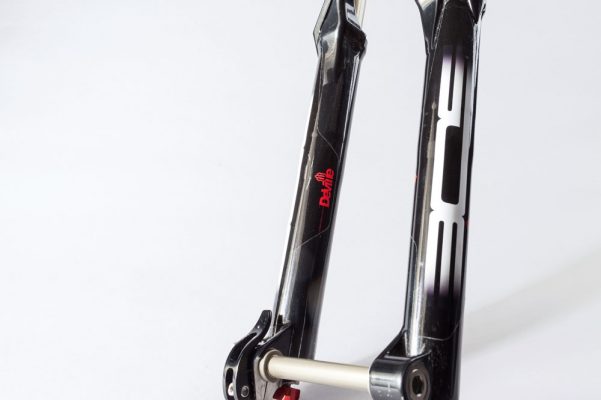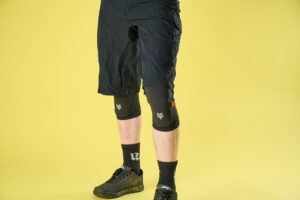The silky smooth action means that traction and comfort on loose, rough trails are both first rate.
Bos Deville 3-Way TRC 160mm fork review
Top of the Bos Deville range is the £1,000 FCV version. We chose not to test that fork however, as we weren’t too impressed by the FCV valving when we rode it on the Bos Idylle RaRa downhill fork.
>>> Best 160mm suspension forks

Instead, we opted for the less expensive Deville 3-Way, which has simple rebound, high and low-speed compression adjustment. It also retains that ultra-plush feeling that made Bos forks famous.
It’s air sprung with a fixed coil negative, and it was much easier to set up than the DVO Diamond. Bos doesn’t offer volume reducers for tweaking the spring curve, but the TRC feature lets you close off a portion of the air spring to make the fork much firmer for extra ramp-up on really steep descents. It’s too dramatic a change to be a useful tuning tool though, as it almost halves the travel.
>>> How to set up mountain bike suspension

QR design ensures smooth operation but can be tricky to remove
With 34mm stanchions, the Deville isn’t as stiff as the Fox, but you only really notice this when stuffing the bike into tight, steep switchbacks where you are really side-loading the front end.
To ensure that the upper and lower legs maintain perfect alignment, the 15mm QR system on the Deville doesn’t compress the lowers or the hub. Yes, the QR lever gets sticky, almost unmanageable with cold hands, so it’s worth cleaning it on a regular basis.
Because Bos uses an open cartridge damper in the 3-Way, oil is free to move around inside the fork leg. This means if you lay the bike down, or hang it on an uplift trailer, you can lose most of your damping. So it’s always worth cycling the fork through its travel a couple of times before every run.

Finish and detail is as you’d expect from big money Bos
Air mixing with the oil obviously isn’t an issue when you ride, because even on the nastiest trails we never noticed any loss of damping.
The silky smooth action of the Bos Deville means that traction and comfort on loose, rough trails are both first rate. Push it flat-out through root and rock and it’s cool as a cucumber. Baseline settings on the Bos website are good too, just don’t be tempted to go straight to the Race level recommendations.
One area where the Bos Deville loses ground to the Fox 36 and the RockShox Lyrik is on flat, smooth corners, where the plushness of the fork makes it harder to load the front tyre for grip. Tyre clearance is also limited with the low arch design.
















